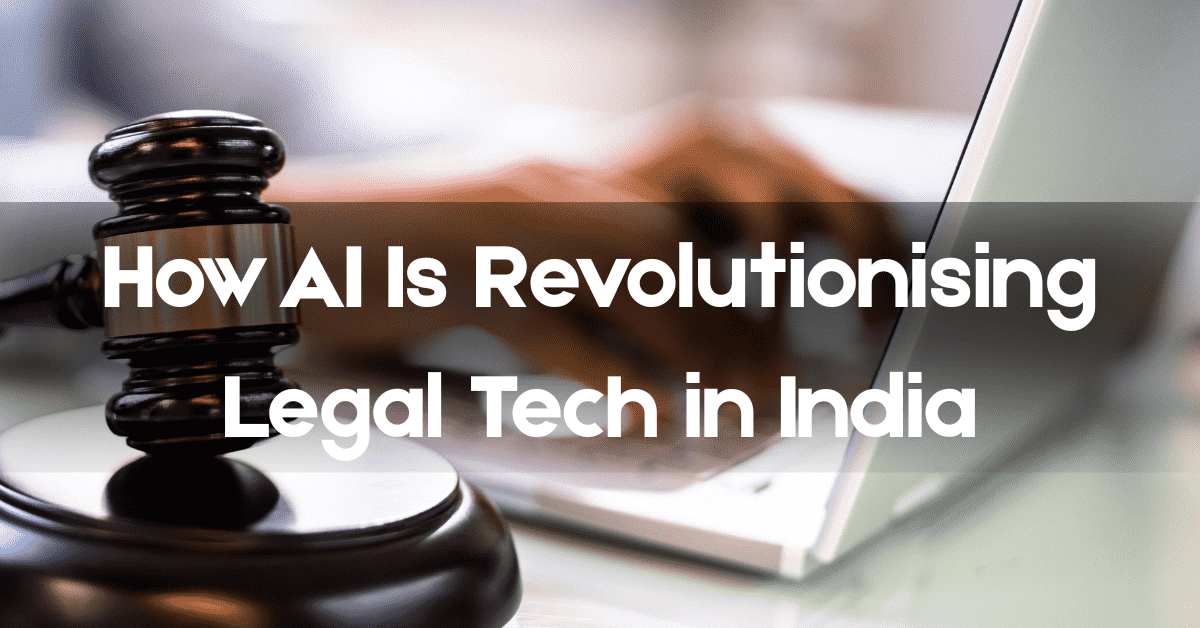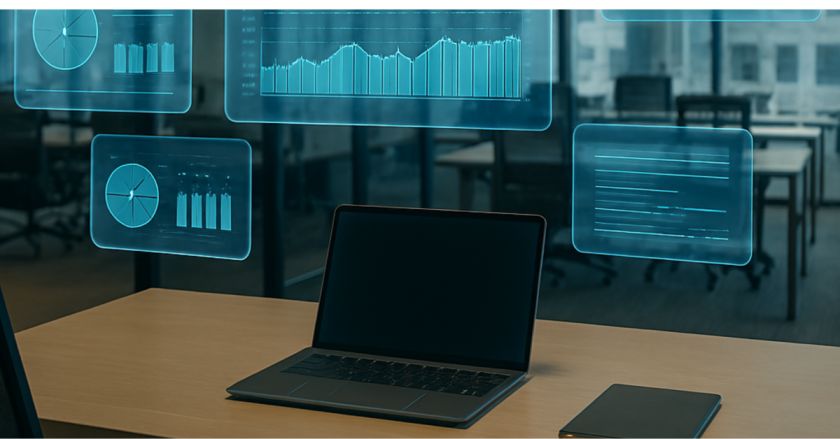For many large Indian enterprises, the legal function remains one of the busiest but least digitised parts of the organisation. They handle thousands of contracts, compliance checks, and filings while trying to stay updated with new regulations and litigation. However, manual work, fragmented systems, and limited visibility make it difficult for them to move fast or manage risks proactively.
AI is helping change this. It has given legal teams the ability to process complex data quickly, identify early warning signs, and guide business decisions with confidence.
Enterprises across India have started using AI not just to automate legal work but to make it smarter. According to a report by Gartner, over 40% of general counsels are now testing AI-powered legal technology in beta, and over 50% say that leveraging AI-powered applications is a top priority for them.
AI is helping them to transform their legal operations into a proactive function that safeguards the company, fosters growth, and improves decision-making.
What AI Means for Legal Technology Today
AI is now a standard feature in enterprise legal technology. What began as an experiment a few years ago has evolved into a structured, business-critical deployment. It is embedded within contract management, compliance, and case analysis platforms rather than existing as a standalone solution.
Many enterprise legal teams have started viewing AI as an essential enabler that enhances operational efficiency, accuracy, and the speed at which decisions are made.
This new phase has brought about three major changes:
Enterprises now use AI trained specifically on statutes, contracts, and case law. With this profound knowledge, the systems are able to generate outputs that are polished and ready for review, not generic text output.
AI works within enterprise platforms such as contract lifecycle management and compliance dashboards, allowing users to access insights in the tools they already use.
- Governance and reliability
With sensitive data at stake, every enterprise demands audit trails, explainability, and strict access control. These safeguards make AI trustworthy in corporate legal environments.
The Indian legal AI market reflects this maturity. It is valued at around USD 29.5 million in 2025 and is projected to cross USD 106.3 million by 2030, growing at nearly 23% annually.
This growth reflects how enterprise buyers now evaluate legal technology by its data quality, integration depth, and reliability rather than by surface-level automation. As reported by Mondaq, AI is now central to how large Indian corporations manage contracts, compliance, and dispute portfolios.
5 Use Cases Of AI In Legal Tech
AI-powered legal platforms have become an integral part of the daily operations of many enterprises in recent years. Here are some ways in which they are using AI to streamline their legal operations:
- Contract Intelligence and Lifecycle Management
AI can read, classify, and extract clauses from thousands of contracts at once. It flags deviations from policy or regulatory requirements and sends alerts about upcoming contract renewals.
- Legal Research and Summarisation
AI speeds up research by finding relevant judgements and summarising lengthy opinions within seconds. Hybrid models that combine retrieval and summarisation have shown stronger precision in legal reasoning tasks. Frameworks such as Nyay-Darpan have achieved about 75% accuracy in identifying similar Indian judgements.
- Predictive Analytics and Outcome Forecasting
Predictive systems now assess the likely outcomes of cases and assign risk scores to them. The NyayaAnumana and INLegalLlama models, trained on more than 700,000 Indian court decisions, have demonstrated strong precision and built-in explainability. This helps the general counsel prioritise their cases, plan settlements, and allocate resources effectively.
- Smarter Document Review with AI
AI can quickly scan through a large volume of documents, case filings, and emails to identify what is relevant, group related documents together, and flag unusual patterns.
This process, which earlier took humans several days or weeks to finish, can now be completed by AI in minutes. A study done by ResearchGate has shown that this approach reduces document review time by up to 60%.
- Compliance Monitoring and Regulatory Alerts
The AI-powered legal platforms continuously scan the new circulars, court rulings, and government notifications to determine the ones relevant to the enterprise. This turns compliance from a periodic task into a continuous process. Government and industry reports highlight how AI-driven governance initiatives in India are improving policy compliance tracking.
Measurable Business Impact of AI in Legal Tech
AI is creating real results for legal teams, not just increasing their efficiency. By using AI-powered legal tech, enterprises are seeing faster turnarounds, lower costs, and stronger decision-making across their legal operations.
- Efficiency Gains & Faster Turnaround
AI helps legal teams move quickly. Document reviews, research, and contract approvals, which previously took days, now take only a few hours to complete. This makes deal cycles faster and compliance functions more responsive.
A Thomson Reuters study found that 53% of legal professionals already see measurable ROI from AI, mostly in speed and productivity. When AI and automation handle the lower-value tasks, the legal teams get more time to focus on strategy and negotiation.
Cost Reduction and Smarter Resource Use
As already mentioned, by taking over repetitive work, AI lets in-house lawyers focus on what actually needs their attention.
By automating routine reviews and basic due diligence, they can reduce the number of hours billed by external counsel. Furthermore, they can have more control over their budget and reduce costs progressively by utilising their internal talent in a better way.
Improved Accuracy and Risk Control
AI can process vast volumes of data and flag potential issues before they escalate into big problems. It reduces errors in manual oversight and strengthens compliance documentation. This gives the legal teams confidence that nothing important is being overlooked.
Higher Return on Investment
When time savings, accuracy, and risk prevention come together, the impact is measurable. A recent study found that legal teams using AI solutions saw more than a 3x return on investment within three years.
Actionable Insights for Leadership
AI turns legal data into useful business intelligence. Predictive analytics help general counsels and compliance heads see where risks are rising, which contracts need attention, and how legal operations influence the company’s performance.
Challenges and Ethical Considerations in AI Adoption
Using AI in legal operation requires a balance of speed and caution. Some of the key challenges are:
Security and Confidentiality
Legal data is among the most sensitive assets that an enterprise holds. Any breach or exposure of contract data, client communications, and litigation materials can have severe legal and reputational consequences.
A recent study by Deloitte found that 92% of Indian executives identify data security as the greatest obstacle to scaling AI. Additionally, a survey of IT leaders in India found that 54% identify security gaps as a significant barrier to AI success.
To mitigate these risks, enterprise-grade legal AI systems must include secure encryption, segregation of privileged data, and limited access protocols.
Regulation and Compliance
The Digital Personal Data Protection Act 2023 has already been enacted in India, and its draft implementation rules are being refined currently. These regulations define how enterprises must handle personal data, cross-border data transfers, and their fiduciary responsibilities.
Depending on the countries in which the enterprises operate, their teams may also have to comply with global regulations like the EU AI Act, which sets new standards for transparency and liability for AI models.
- Explainability, Trust & Accountability
The end users and auditors of AI must understand why AI had made a recommendation and not just see the output. Without transparency, AI adoption will not be possible.
A study done by IBM in 2024 found that 71% of Indian CEOs say trusting AI is impossible without effective governance. Yet, only about 42% believe they currently have good generative AI governance in place.
To be widely acceptable, AI models must include provenance logging, confidence scores, and traceable decision paths so humans can examine, verify, or override as needed.
Bias and Fairness
AI must be explainable, auditable, and fair. However, AI models trained on historical data may replicate existing biases in judgements, contract outcomes, or compliance rulings, etc.
Research on bias in Indian legal datasets shows uneven representation across regions, courts, and subject matters. This means that blind use of trained models can give rise to skewed outputs. This error can be avoided by training the AI models on a diverse set of data, continuous bias testing, and human oversight.
- Errors in output
AI reduces the possibility of human errors and speeds up workflows. However, the use of AI itself gives rise to a new set of challenges.
Studies have found that the hallucination rates of legal AI models range between 17% and 33%. This shows the need for constant verification and rigorous quality checks.
AI-powered legal systems can significantly reduce the costs of review and improve accuracy when their outputs are monitored and verified properly.
- Human Oversight
AI should support legal judgements, but maintaining human accountability is crucial. Enterprises must create policies defining which tasks require human validation, particularly for filings and litigation decisions.
The Future: Predictive Legal Intelligence
Enterprise legal functions are entering a new phase where AI does more than automate. It helps teams see what’s coming next – spotting contract risks, predicting compliance gaps, and estimating how disputes might arise.
From Automation to Prediction
Most large organisations have started using AI to automate document reviews and workflow management. The real value now lies in prediction. Legal teams are starting to identify risk patterns before they turn into issues.
Predictive analytics can forecast possibilities of disputes, flag contracts that may breach key terms, and highlight areas where regulatory action is rising.
According to the NASSCOM AI Adoption Index 2024, Indian enterprises have started moving from static dashboards to predictive systems that can detect anomalies early and suggest suitable corrective actions.
Data-Driven Compliance and Risk Mapping
AI-powered legal tools are changing how enterprises manage compliance. By combining laws, circulars, and policy updates, they produce real-time “risk maps” that provide general counsels with a unified perspective of obligations across various business units and jurisdictions.
Quantifying Financial Impact
Forward-looking legal departments are using AI data not just to track activity but also to track the business impact of legal work in financial terms. They are tracking metrics such as cost avoided, time saved, and revenue protected to connect legal performance directly to ROI.
Conclusion
AI has reshaped how legal tech creates value for enterprises. It enables faster research, smarter contract management, and measurable risk reduction while allowing legal teams to act fast and save time. For enterprises that want to stay ahead of regulatory and operational risks, predictive legal intelligence is the next logical step.
Legistify has brought this vision to life with LegisTrak, an AI-powered legal intelligence engine, which connects contract, compliance, and litigation data in one system to give enterprises predictive visibility and control. This unified view lets teams act before a risk turns into a problem, making the legal function faster, more transparent, and aligned with business growth.
Book a demo of Legistify’s Litigation Management Software to see how it helps corporate legal teams move from reactive firefighting to proactive, data-led, AI-assisted decision-making.




